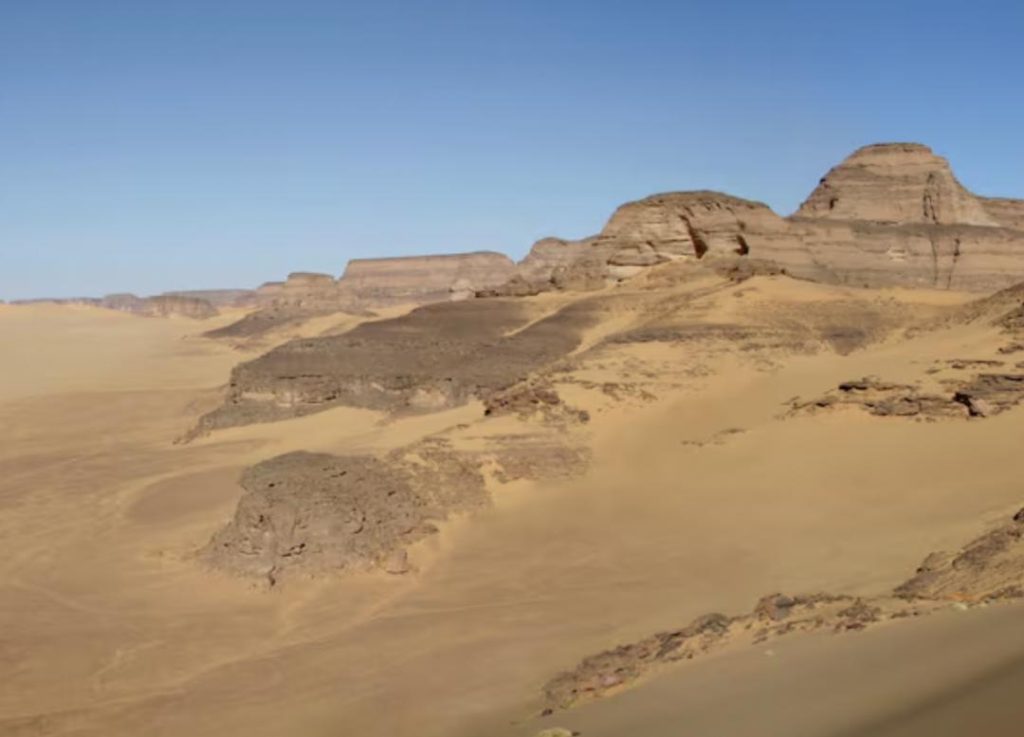
Sahara Desert was Once Home to Mysterious Human Lineage: Study
The Sahara Desert, one of the most inhospitable places on Earth, has long been a symbol of aridity and desolation. However, a recent study has revealed that this vast expanse of sand and rock was once home to a mysterious human lineage that lived in a lush green environment, teeming with bodies of water. The discovery, published in the journal ‘Nature’, has sent shockwaves through the scientific community, offering a glimpse into a previously unknown chapter in human history.
According to the study, the Sahara Desert, during a period from about 14,500 to 5,000 years ago, was a verdant savannah, rich in bodies of water. This is a far cry from the harsh, barren landscape we see today, where temperatures regularly soar above 120°F (49°C) and rainfall is scarce. The researchers believe that this transformation occurred due to changes in the Earth’s climate, which led to the formation of lakes, rivers, and wetlands in the region.
But what’s even more remarkable is that this lush environment was home to a mysterious human lineage that lived in isolation from the outside world. The discovery was made possible through DNA analysis of the remains of two individuals who lived around 7,000 years ago. The skeletal remains, which were found in the Ahaggar Mountains of Algeria, provided scientists with a unique opportunity to study the genetic makeup of this ancient population.
The study, led by researchers from the University of Toulouse, France, and the University of Cambridge, UK, analyzed the DNA from the two individuals and compared it to existing genetic data from modern populations around the world. The results were striking: the DNA from the ancient individuals showed no clear connection to any known human populations, suggesting that they were a distinct and isolated group.
“This is a truly remarkable discovery,” said Dr. Marie-Thérèse Lebègue, lead author of the study. “We have found evidence of a previously unknown human lineage that lived in the Sahara Desert around 7,000 years ago. This is a significant finding, as it challenges our current understanding of human migration and population dynamics in Africa.”
The researchers believe that this mysterious lineage may have originated from a group of people who migrated to the Sahara Desert from the north, possibly from the Mediterranean region. However, over time, they became isolated from the outside world due to the harsh climate and geography of the region. This isolation allowed them to develop unique genetic characteristics that are distinct from other human populations.
The discovery of this ancient human lineage has significant implications for our understanding of human history. It suggests that there may be many other unknown human populations lurking in the genetic records, waiting to be discovered. It also highlights the importance of preserving ancient DNA samples, which can provide valuable insights into the past.
The study’s findings also have important implications for our understanding of climate change and its impact on human societies. The transformation of the Sahara Desert from a lush green environment to a harsh desert occurred around 5,000 years ago, coinciding with a period of significant climate change in the region. This suggests that climate change may have played a significant role in the decline and eventual extinction of this mysterious human lineage.
In conclusion, the discovery of a mysterious human lineage in the Sahara Desert is a significant finding that challenges our current understanding of human history. The study provides a fascinating glimpse into a previously unknown chapter in human history, highlighting the importance of preserving ancient DNA samples and the need to continue exploring the genetic records of our ancestors. As we continue to uncover the secrets of the past, we may yet discover more surprises that challenge our understanding of who we are and where we come from.






